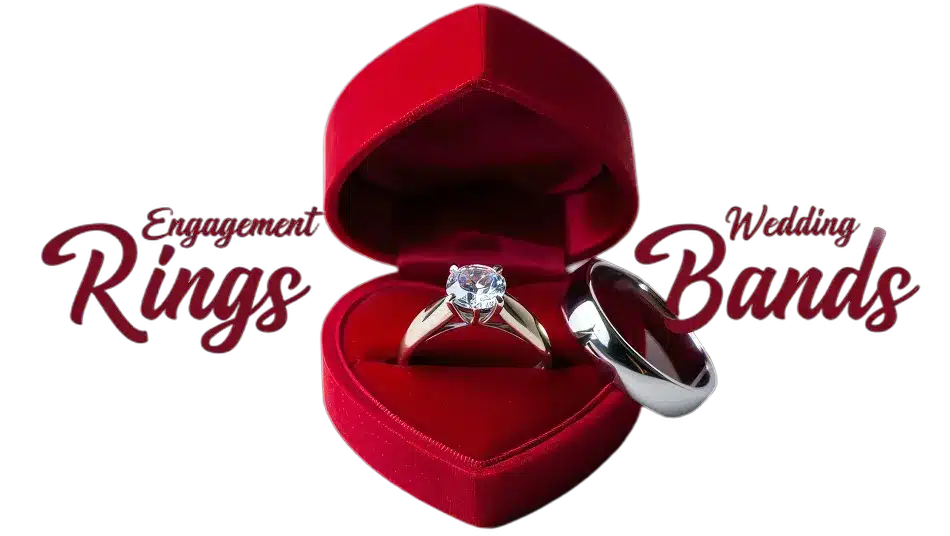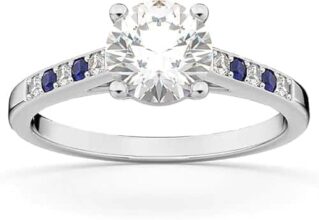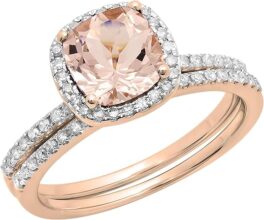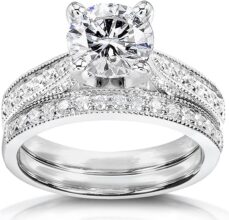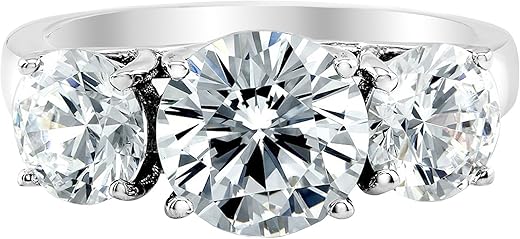
Welcome to the World of Diamond Color
When it comes to choosing an engagement ring, understanding diamond color is essential. This delicate detail can greatly influence the diamond’s overall appearance and, ultimately, your satisfaction with this symbol of love. You want your ring to shine brightly and reflect your unique style, and knowing how color plays a role is key.
In this article, we will explore what diamond color really means and how it affects both price and value. You’ll also learn how lighting can dramatically alter your perception of a diamond’s color. By the end, you’ll be equipped to choose a diamond color that not only complements your taste but also enhances your ring’s brilliance.
Take a moment to dive into the fascinating world of diamond color, and discover how the right choice can make your engagement ring even more special. Let’s get started!




What is Diamond Color?
Understanding diamond color is your first step toward finding a ring that truly symbolizes your love story. The color of a diamond refers to the lack of color; the less color, the higher the quality. Most diamonds fall into a grading scale ranging from D to Z, established by the Gemological Institute of America (GIA). So, what does this scale mean for you?
The Color Grading Scale
Understanding this grading can help you make an informed decision. For example, if you opt for a G-H diamond, you still enjoy stunning visual appeal while saving some budget for other features, such as carat weight or setting styles.
How Color is Determined
Diamond color is determined through a careful examination of the diamond’s hue, tone, and saturation. Experts utilize specialized lighting and a keen eye to detect any subtle differences that may not be apparent to the untrained eye. Typically, diamonds are graded face down to avoid any reflection or distractions that could impact their appearance.
Why Color Matters
When selecting a diamond for your engagement ring, color plays a crucial role in its overall quality—and thus its desirability. A colorless diamond is likely to reflect light in stunning ways, enhancing the diamond’s brilliance and fire. Imagine watching your diamond sparkle under candlelight or sunlight; a higher color grade will result in a captivating display that you’ll cherish.
You may notice that certain settings can enhance or diminish the appearance of a diamond’s color. For instance, a white gold or platinum setting can emphasize a diamond’s colorless qualities, while yellow gold might bring out a warmer tone in diamonds with a slight tint.
To see a prime example of how diamond color affects your overall look, consider the stunning Lab Grown Diamond Engagement Ring in White Gold which beautifully embodies the crisp clarity of a higher color grade.
Choosing the right diamond color is more than a matter of budget; it also touches on personal style and how you want your engagement ring to shine in your life moments. With a grasp of how diamond color works, you’re well on your way to making a choice that speaks to your heart.
As you continue on this journey of understanding, the next step is exploring how lighting can dramatically alter the perception of color in your chosen diamond.
How Color Affects Price and Value
Understanding how diamond color influences its price can be a game-changer when shopping for your perfect engagement ring. The truth is, color plays an integral role in determining a diamond’s value, and this often translates directly to the ring’s price. But how does that exactly work?
The Color Premium
Diamonds that are near colorless, particularly those graded from D to F, command a hefty price due to their rarity and desirability. Here’s a quick breakdown of how the color affects pricing:
Making Budget-Friendly Choices
If you’re working with a budget, focusing on G-H diamonds allows you to attain a gorgeous piece without compromising too much on quality. For instance, consider this approach:
Real-World Example
Let’s visualize this in practice. Imagine two identical rings—one with a D color diamond and another with a G color diamond. The D color diamond could cost upwards of $10,000, while the G color diamond may only set you back around $6,000. Both rings could look incredibly similar to the naked eye, especially once set, but choosing the G color diamond offers significant savings that can be redirected to your honeymoon or other meaningful experiences.
This approach illustrates that understanding color can empower you to make wise, budget-conscious decisions while still opting for a beautiful diamond that reflects your unique style.
The Long-Term Value
When it comes to the long-term value of your diamond, the color remains a crucial aspect. Higher-grade diamonds often hold their value better over time, making them a worthy investment. This can be especially important for future considerations, such as passing it down through generations.
As you navigate the complexities of diamond pricing and value, it’s crucial to also consider how lighting can dramatically affect how color is perceived in your chosen diamond. Let’s shine a light on that next!
The Role of Lighting in Perceiving Color
You might be surprised to learn how much lighting conditions can influence the way a diamond’s color is perceived. Just as a beautiful painting looks different in sunlight than it does under fluorescent lights, your diamond can present different hues depending on the environment. Understanding this is pivotal to ensuring that the diamond you choose aligns with your vision for your engagement ring.
Natural vs. Artificial Light
The two main types of lighting to consider are natural light and artificial light. Natural light, especially sunlight, can reveal a diamond’s true color. In daylight, you may see the cold, icy clarity of a D or E color diamond come to life, showcasing its brilliance. In contrast, under artificial lighting—whether it’s warm incandescent or cool fluorescent—the diamond might show traces of color that weren’t apparent outdoors.
Here’s what you should keep in mind:
A fantastic tool to use when viewing diamonds indoors is an LED engagement ring display box, which can simulate various lighting conditions. This can give you a better idea of how your diamond will look in different situations—an invaluable preview as you make your decision.
Evaluating Diamonds in Different Light
When you’re in the jewelry store, take some time to walk around and see how the diamond looks in different settings and lights. Here are a few tips for assessing your diamond:
The Impact of Environment on Perception
The setting in which the diamond will ultimately reside also enhances or diminishes how you perceive its color. For example, a ring set in yellow gold may accentuate the warmth of a diamond with a slight tint, while white gold or platinum can enhance a diamond’s colorless properties.
Understanding how light plays a crucial role in your diamond’s appearance will set you up for a more informed buying decision. As we illuminate the nuances of color and light, let’s dive into some common misconceptions surrounding diamond color next.
Choosing the Right Color for Your Style
When it comes to selecting the right diamond color, personal style plays a pivotal role. The ideal diamond should not only reflect your love story but also align with your aesthetic preferences and lifestyle. Let’s explore how to find the perfect diamond color that seamlessly integrates with both your style and your chosen metal setting.
Matching Colors with Metal Settings
The metal setting for your ring can dramatically influence how diamond color is perceived. Here are some combinations to consider:
Each metal type has its unique charm and can affect the diamond’s appearance, so consider your daily wear and personal taste when making your selection.
Complementing Other Gemstones
In addition to the diamond, think about any other gemstones you might want to include in the design. Mixing gemstones can create a striking, personalized ring. Here are a few ways to incorporate color:
Personalizing Your Choice
Everyone’s style is unique, and the chosen diamond color should resonate with your personality. Why not consider your favorite colors or a theme that speaks to both of you?
Ultimately, your choice should mirror who you are and what your relationship represents.
As you navigate these elegant options in crafting the perfect diamond engagement ring, the next step involves debunking some common misconceptions about diamond color that might influence your decision. Let’s demystify these myths to better equip you on your journey!
Common Misconceptions about Diamond Color
As you delve deeper into the world of diamonds, you may come across various myths surrounding diamond color. It’s time to separate fact from fiction to help you make an informed choice. Here, we’ll debunk some of the most common misconceptions so you can approach your diamond purchase with confidence.
Misconception #1: The Whiter, The Better
Many people assume that the whiter a diamond is, the better it must be. While it’s true that colorless diamonds (D-F grades) are highly coveted, this notion doesn’t account for personal style or the significant beauty of near-colorless diamonds (like G-H). In fact, these options can look stunningly vibrant in the right setting and often offer much better value without compromising on visual appeal.
Misconception #2: Diamonds Are Only Beautiful in Certain Colors
Another myth is that diamonds only look fabulous when they’re colorless or near-colorless. However, diamonds actually come in an array of beautiful shades, including yellows, pinks, and blues. Colored diamonds can provide a unique, personalized touch to your engagement ring, making them stand out in a sea of traditional options.
Misconception #3: All Diamonds Show Color
While all diamonds possess some degree of coloration, the idea that all will appear yellow is misleading. The visible color depends on the diamond’s grade, the way it reflects light, and the surrounding setting. A G-color diamond may appear colorless in the right lighting and alongside certain metals.
Using tools like a portable diamond color grading board can help you better understand the subtle specks of color, guiding your choices as you shop around.
Misconception #4: Fluorescence Always Affects Color
Fluorescence—the glow some diamonds emit under UV light—can lead to the assumption that these stones always have undesirable color characteristics. In reality, many diamonds with faint fluorescence can appear whiter in natural light, enhancing their color grade perception.
Misconception #5: Personal Preference Doesn’t Matter
Lastly, a common misunderstanding lies in the belief that diamond ratings should solely dictate your choice. While objective color ratings are essential, your personal preference is the key. Don’t shy away from less conventional colors if they resonate with your taste and style.
By dissecting these myths, you can approach your diamond purchase with a clearer vision of what you truly desire. Now, armed with this knowledge, you’re ready to take the next step in your journey toward finding your perfect diamond engagement ring.
Before you embark on this adventure, let’s wrap things up with some final thoughts on finding your ideal diamond!
Your Perfect Diamond Awaits
In conclusion, understanding diamond color is essential for selecting the perfect engagement ring that resonates with your style and love story. From the definition of diamond color to its impact on price, lighting effects, and common misconceptions, this guide has equipped you with the knowledge you need to make an informed choice.
Remember, your engagement ring is not just a piece of jewelry; it’s a symbol of your unique bond. Take your time, explore your options, and choose a diamond color that truly reflects your personality. Your perfect diamond is out there, waiting for you to find it!
